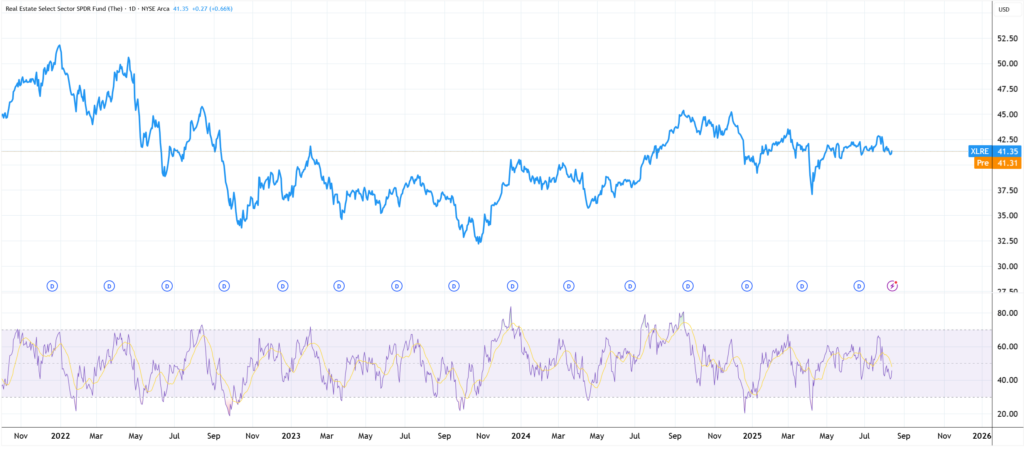
The domestic housing market has hit a strange turning point. If considering pure numbers, an observer could think that buyers are finally winning. Inventory is piling up, and sellers outnumber buyers by more than a third in many markets. Price cuts and concessions are no longer rare — they're part of the script.
Yet, if you're out shopping for a home now, it probably doesn't feel like a buyer's dream. Mortgage rates are still hovering above 6.5%, property taxes and insurance premiums are up, and affordability is scraping along historic lows. And all of this is playing out within the broader business cycle, which is, inconveniently, late in the game.
It is not about a housing slowdown – it is where it sits in the larger rhythm of booms, busts, and recoveries. To understand what's happening, it is necessary to consider the link between the real estate cycle and the business cycle. One drives the other, and when one starts grinding, you can bet the other is going to feel it.
It's A Buyer Market, Kinda
In June, there were about 1.922 million sellers and 1.413 million buyers, according to Redfin. That's a 36% gap — well beyond the 10% margin that defines a buyer's market. But here's the catch.
Yes, buyers have more choices. Yes, price cuts are more common (21.5% of homes sold in June went below asking). But home prices are still 44% higher than in mid-2020, Newsweek calculated, and carrying costs like HOA fees, insurance, and taxes haven't exactly backed down. So you have more leverage — but you're still negotiating in a high-price, high-rate environment.
And this shift isn't even spread evenly. Sun Belt boom states like Texas and Florida are drowning in inventory thanks to overbuilding. The Northeast? Still tight supply, still competitive bidding. Meanwhile, delistings — sellers pulling their homes off the market — are up nearly 50% from last year, a sign that some would-be sellers would rather sit on the sidelines than accept the market's new reality.
Buyers have the upper hand, but that hand is holding a hefty mortgage bill.
FED Might Help, Or Not
The highly anticipated rate cuts could give buyers some breathing room. The historical link is pretty straightforward – Fed funds rate down, mortgage rates down – eventually.
But "eventually" is the keyword. Mortgage rates track the 10-year Treasury yield more closely than the Fed's overnight rate. Still, that yield is influenced by inflation expectations, investor sentiment, and global capital flows. If the bond market sneezes, and foreign holders suspect a cold, yields could go up fast.
So even if Jerome Powell comes out tomorrow and slashes rates, you're not guaranteed to see your mortgage quote tumble overnight. Plus, if rate cuts come because the economy is sliding into a recession, buyer confidence could tank even faster than mortgage rates drop. That dynamic means you'd have cheaper loans, but fewer people willing — or able — to take them.
And remember, the housing market is notoriously slow to react to rate changes. We saw this in reverse during the tightening cycle starting in 2022 — it took months for 3% mortgage rates to blow past 6%. Don't expect the unwind to be instant.
We're Late, But – How Late?
Here is where it gets interesting, and scary. Veteran Australian analyst Alan Longbon, who studied the 20-year land cycle building on the work of Fred Harrison, believes we're heading into the final innings.
His model? Pretty simple, but articulated. Land prices rise for about 14 years, then the music stops. The phases proceed as follows: homebuilder stocks peak first, then home prices, then the stock market, followed by a recession, and finally, commodities (including gold) peak last.
The Real Estate Select Sector SPDR ETF (NYSE:XLRE) has already shown signs of a weakening momentum in 2025, with the daily chart showing lower highs and lower lows.

Real Estate Select Sector ETF, 2022-Present, Source: TradingView
If the Fed loosens credit, Longbon sees a final rally and home prices make a last push to a peak — likely in mid-to-late 2026. After that, it's the domino effect: stock market top in 2027, recession in 2028, and a gold price blowoff in 2031.
What does that mean for today's buyer or investor? It means the current softness in the market is a warning, not a bottom. If you're buying for the long term, you'll have to weather potential price declines over the next several years. If you're selling, you might want to think hard about whether this "buyer's market" is as good as it's going to get for a while.
Read Next:
Photo: bilanol/shutterstock







